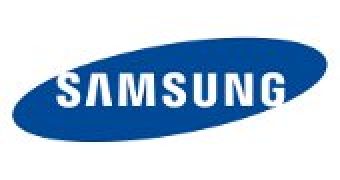Taking a break from the releases on the memory market, Samsung has now put its 65nm manufacturing process to good use and created the S3C2680/ S5M8311 WUSB, a wireless USB solution based on UWB (Ultra Wide Band) technology.
While multimedia playback devices may be able to play HD and Full HD videos, most of them are unable to wirelessly receive such content from mobile host devices.
As such, Samsung invented the S3C2680/ S5M8311 WUSB, a wireless USB solution that can connect such host mobile electronics to tethered devices.
The WUSB chipset is a merger between a RF receiver and a system-on-chip (SoC) baseband processor that can be applied in an SD card form factor.
Hardware-wise, Samsung used an ARM 9 core, as well as interfaces like SDIO, SD card and SD host, plus a NAND Flash controller and a pair of high-speed USB 2.0 PHYs, in addition to AES 128-bit encryption.
Also, besides SD, the product can be included in USB dongles or embedded in consumer and mobile applications.
What's more, the WUSB boasts a built-in flash memory controller, which practically makes it the only product in existence to support WUSB-enabled SD cards.
Basically, the wireless USB chipset can reach information throughput rates of over 200 Mbps even while consuming 10 times less power than 802.11g WiFi.
“The ability to handle wireless high-speed data transmission while consuming less power is a key requirement for many consumer electronic devices,” said Yiwan Wong, vice president, System LSI marketing, Samsung Electronics.
“Due to power/performance issues, previous generations of WUSB products were unable to meet the consumers’ expectations. Samsung’s new WUSB chipset delivers up to 480Mbps (Megabit per second) data transmission rate, at an average power consumption of less than 300mW,” Wong added.
“This level of power efficiency greatly increases the attractiveness of WUSB connectivity in consumer electronic and mobile applications,” the VP concluded.
The Samsung’s S3C2680/S5M8311 WUSB chipset will enter mass production during Q4, 2010 but is already sampling to select consumers.

 14 DAY TRIAL //
14 DAY TRIAL //